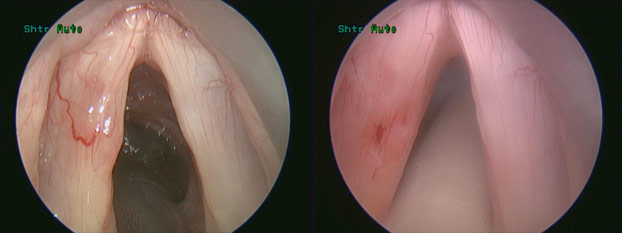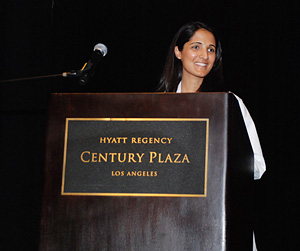- Question: How do the ingredients in e-cigarettes and vaporizers affect respiratory health? - August 16, 2019
- Bad Technique and Vocal Injury - January 9, 2019
- Is Edible Marijuana Dangerous for the Voice? Myths Dispelled - December 18, 2018
- Surprise! You have a hemorrhage - January 31, 2018
- Graves’ Disease: Treatment Overview - September 25, 2017
- Adele and the Stigma of Vocal Injury - July 11, 2017
- Vocal Curbside Consult: How does the thyroid affect the voice? - May 16, 2017
- Vocal Curbside Consult: How do hormones affect the voice? - May 3, 2017
- Vocal Curbside Consult: How do emotion and stress affect the voice? - April 17, 2017
- Vocal Curbside Consult: Vocal Recovery After Illness - April 7, 2017
The patient is a 27-year-old female enrolled in a graduate level vocal performance program. She has had vocal difficulties for many years, including vocal inconsistency, intermittently decreased vocal range, and increased effort of phonation. She has sought evaluation numerous times. Each evaluation has noted the presence of varices (dilated blood vessels) on the left vocal fold but she has been told that varices cannot cause dysphonia (vocal symptoms) unless they rupture, resulting in a hemorrhage. The times that she has been evaluated while symptomatic did not demonstrate a hemorrhage and so she has been told there was nothing that could be done.
Videostroboscopy was performed and is presented here:
My initial conclusion was the same: varices were present with associated dampened vibration but unless they hemorrhaged, they were unlikely to be the cause of vocal inconsistencies. Symptoms were intermittent but the varices were always present so how could they be the cause of the patient’s symptoms?
The patient insisted that her symptoms were real and that she was training rigorously to optimize technique. She studies with several reputable teachers and was evaluated by my vocal therapist and her technique was excellent (speaking and singing). I had to trust that her symptoms arose from something physical. I proceeded to aggressively collect data on her voice, during symptomatic and asymptomatic times. After a period of a few months, the only viable culprits were the varices. We had a lengthy discussion about laser treatment of the varices and the associated risk given she is a soprano. She elected to proceed with laser treatment of her vocal fold varices as well as any necessary adjunctive procedures.
Intraoperatively, a pulsed KTP laser was utilized to reduce the vocal fold varices. This still image was taken during the laser treatment.

Two weeks post-operatively, stroboscopy was performed:
One month later, the patient was released for singing. She reported significantly improved voice with increased reliability and consistency. Stroboscopy was performed:
The most important lessons from this case include:
- Varices can be symptomatic and are likely due to microscopic degrees of swelling that will be impactful to a soprano. In this case, there were associated abnormalities within the vocal fold and on the surface that were simultaneously addressed.
- When a patient states they have symptoms, even if the diagnosis is not easily discerned, the onus is on the laryngologist to determine the cause.
To learn more about Dr. Reena Gupta or comprehensive voice evaluation, please visit www.voicedoctorla.com.



